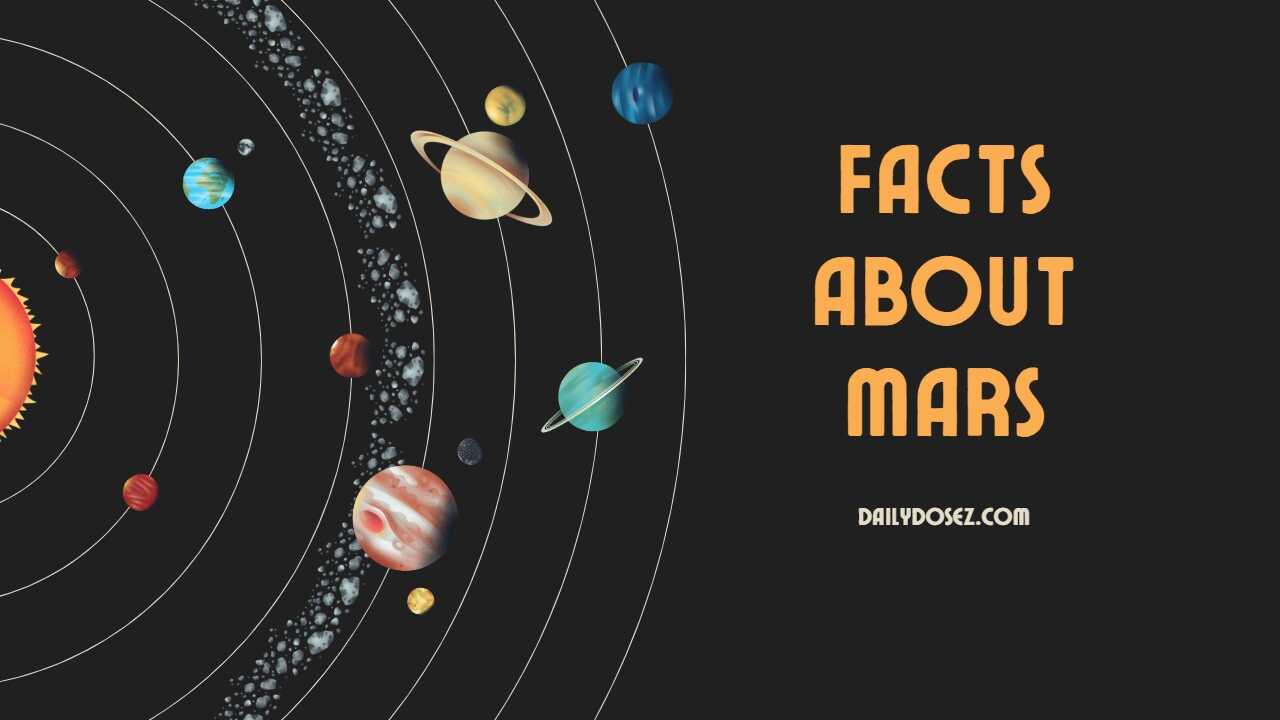Mars, often referred to as the “Red Planet,” has captivated the human imagination for centuries. As our neighboring planet, Mars has long been a subject of scientific research and speculation. In this article, we will delve into five intriguing facts about Mars that shed light on its unique characteristics and the ongoing exploration efforts.
- Mars: The Fourth Planet from the Sun
- The Red Planet: An Unmistakable Hue
- Olympus Mons: The Tallest Volcano in the Solar System
- Mars’ Watery Past: Clues of Ancient Rivers and Oceans
- The Curiosity Rover: Unveiling Martian Secrets
Let’s explore each of these facts in more detail:
Mars: The Fourth Planet from the Sun
Mars is the fourth planet in our solar system, situated at an average distance of 142 million miles (228 million kilometers) from the Sun. It orbits the Sun at an average speed of 14.5 miles per second (23.3 kilometers per second). Due to its proximity to Earth and its relatively similar size, Mars has been a focal point for scientific study and potential future human exploration.
The Red Planet: An Unmistakable Hue
One of the most distinctive features of Mars is its reddish appearance. The planet’s surface is predominantly composed of iron oxide, commonly known as rust. This iron-rich dust and soil give Mars its characteristic reddish hue. The planet’s atmosphere also plays a role in reflecting and scattering sunlight, contributing to its distinctive color.
Olympus Mons: The Tallest Volcano in the Solar System
Mars boasts an impressive geological feature known as Olympus Mons, the tallest volcano in the entire solar system. This shield volcano reaches a staggering height of about 13.6 miles (22 kilometers), nearly three times the height of Mount Everest. It spans an area roughly equivalent to the state of Arizona, making it the largest volcano by surface area as well.
Mars’ Watery Past: Clues of Ancient Rivers and Oceans
While Mars is currently a cold and arid planet, scientists have discovered compelling evidence suggesting that liquid water once flowed on its surface. The presence of ancient river valleys, deltaic deposits, and mineral deposits that can only form in the presence of water indicate a much wetter Martian past. These findings ignite the curiosity of scientists, hinting at the possibility of past or even present microbial life on the planet.
The Curiosity Rover: Unveiling Martian Secrets
NASA’s Curiosity Rover, which landed on Mars in 2012, has been instrumental in expanding our knowledge of the Red Planet. Equipped with advanced scientific instruments, the rover has analyzed Martian soil and rocks, discovering evidence of past water and the potential for habitability. Curiosity has provided invaluable data on Mars’ geology, climate, and the potential for supporting microbial life, further fueling interest in future missions.
Conclusion:
Mars continues to be an enticing subject of exploration, offering unique insights into the history and potential habitability of planets beyond our own. The facts presented here merely scratch the surface of the mysteries that Mars holds. As technology advances and our understanding deepens, future missions and scientific endeavors promise to unravel even more about the enigmatic Red Planet, bringing us closer to answering fundamental questions about our place in the universe.




